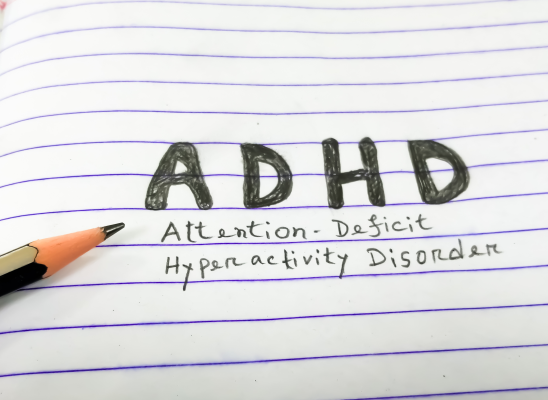
Online test
Find out the severity of your symptoms with this free online test
Anxiety disorders come in many forms, each with unique symptoms and impacts on daily life. And it’s not always easy to distinguish between them.
Two disorders in particular, Obsessive-Compulsive Disorder (OCD) and Generalized Anxiety Disorder (GAD) are often mistaken for each other and misdiagnosis is not uncommon. However, the unique differences in underlying thought processes, symptoms, and patterns of behavior run deep. Understanding those differences is crucial to accurate diagnosis and having the most effective treatment plan to manage symptoms.
Defining OCD and GAD
It’s important to note that while it is often mistaken for an anxiety disorder, OCD is, in fact, not classified as an anxiety disorder. To say it’s complicated is an understatement. Here’s where some of the confusion comes from:
Examples of what we now know as OCD abound in history. However, it was not until the 1950s when OCD was included in the first edition of the Diagnostic and Statistical Manual of Mental Disorders (DSM), not as a distinct diagnosis but as a sub-type of anxiety disorders. In 1980, OCD was formally recognized as a mental health diagnosis and categorized as an anxiety disorder in the DSM-III. Here’s where it gets confusing. With the release of the DSM 5 in 2013, OCD was moved from the diagnostic category of “anxiety disorders” to a new category known as Obsessive Compulsive and Related Disorders (OCRD). This new classification was meant to reflect the unique characteristics of OCD vs other anxiety disorders such as GAD.
Obsessive-Compulsive Disorder (OCD)
OCD is characterized by unwanted, intrusive thoughts (obsessions) and repetitive behaviors or mental acts (compulsions) that individuals feel compelled to perform to alleviate their distress. These obsessions can range from fears of contamination to intense worries about safety, symmetry, or forbidden thoughts. To reduce the discomfort caused by these obsessions, individuals engage in compulsions, which might include washing, checking, counting, or repeating behaviors. These behaviors can take up substantial time and interfere significantly with daily life.
Generalized Anxiety Disorder (GAD)
GAD is characterized by chronic and excessive worry about real world events and concerns. The focus of worry can be anything from finances to you or your family’s health and safety to work…almost any aspect of life. Unlike the specific obsessions in OCD, the worry in GAD is more general and persistent. That worry may even shift from one aspect to another. In addition to persistent worry, GAD can also present with other symptoms such as muscle tension, irritability, fatigue, or difficulty concentrating. This constant state of worry can make it hard to relax, impacting sleep and overall well-being.
Similarities Between OCD and GAD
Even though OCD and GAD are distinct diagnoses, they do share several characteristics:
Excessive Worry and Anxiety
Both OCD and GAD present with a heightened level of worry and anxiety. In OCD, worry is triggered by specific intrusive thoughts. In GAD, the worry is more generalized and often disproportionate to the actual situation.
Physical Symptoms of Anxiety
Both OCD and GAD can manifest with physical symptoms that are commonly associated with heightened anxiety. Typical symptoms can include sweating, racing heart, restlessness, and gastrointestinal distress. Chronic stress is correlated with negative impacts on physical health.
Impaired Daily Functioning
Both OCD and GAD can interfere with a person’s ability to function in their daily lives. They may experience difficulty at work, at school, at home, or in their relationships. For some, just accomplishing their day-to-day activities can be a challenge. They may avoid situations or activities that could trigger their anxiety, which can lead to social isolation and diminished quality of life.
Overlapping Triggers
People with OCD or GAD can share common triggers and concerns. Common themes are associated with issues of safety, uncertainty, or responsibility. How those worries may differ? For example, a person with OCD might have obsessive thoughts about causing harm to someone and compulsively checking on their safety. A person with GAD might also worry about harm but may manifest as excessive worry about their family’s safety. It’s a subtle difference but an important one.
Contributing Factors
While there is no clear cause for OCD or GAD, there are certain biological factors that they share.
Both OCD and GAD are thought to have a genetic component, with family history playing a role in increased susceptibility.
- Twin and family studies have found a genetic heritability of about 31.6% for GAD.
- For OCD, twin and family studies have found heritability rates from 27-47%.
Whether these factors are causal remains unclear and more research is needed.
Differences Between OCD and GAD
While OCD and GAD share similarities, there are also important differences that distinguish OCD from GAD.
Nature of Thoughts: Obsessions vs. Worry
One of the hallmarks of OCD is the presence of obsessions. These are recurrent, specific, intrusive, and unwanted thoughts that intrude into a person’s mind. A critical feature of these obsessions, which sets them apart from generalized worry, is that the thoughts are incongruent with how the person sees themselves. These obsessive thoughts are distressing, leading the person to repeatedly engage in behaviors (compulsions) aimed at reducing their anxiety and distress. Over time, this becomes a vicious cycle.
The defining feature of GAD is the presence of excessive worry that is more generalized in nature and tends to be future-focused. In other words, focused on the “what ifs”. These worries tend to be concerns surrounding relationships, health or safety. Unlike the intrusive, repetitive nature of obsessions, the worry typically associated with GAD is ever-present, broad in nature, and not accompanied by compulsive behaviors.
Compulsions vs Strategies
The other hallmark of OCD is the presence of compulsions. Compulsions are behaviors or mental acts performed to mitigate the distress caused by the obsessions. These acts might be easily noticed (e.g., excessive handwashing, ordering) or internal and not outwardly apparent (e.g., praying, counting, repeating mantras).
With GAD, a person is likely to use strategies to mask or manage their intense feelings of anxiety and worry. They may engage in reassurance-seeking behaviors or go to great lengths to manage their worries. Their attempts to cope with their worry might even look as if they have it all together. For example, in the workplace, they may be the picture of success. At home, they may be the one everyone goes to, always willing to help and always on the go. Instead of being frozen with fear, this high functioning anxiety propels the person forward while their anxiety remains just below the surface.
Catastrophe and Control
For people with OCD, the need to control is deeply connected to their obsessions, often related to the need to prevent catastrophic events linked to their obsessions. These control beliefs manifest as compulsive actions. For example, someone with religious OCD might have an excessive fear of offending God and spend hours praying or repeatedly seeking reassurance from religious leaders or family members to prevent this imagined event. Someone with contamination/germ OCD might worry that they will infect themselves or others and excessively wash their hands.
GAD is focused on the “what ifs” in life. Like people with OCD, they worry about the possibility of bad things happening. However, their worries tend to be more future focused. Their concerns are more generalized and not usually aimed at controlling a specific outcome. For example, “What if my coworkers laugh at me in the meeting? What if they think my ideas are silly? Will my boss believe them and fire me?” The “what ifs” can literally jump from one thought to the next, taking up so much thought space, leaving the person unable to think rationally.
Contributing Factors
Looking deeper at biological causes, there are differences at the neurobiological level. Research has shown that imbalances in brain chemistry, particularly with neurotransmitters like serotonin and dopamine, can influence the development of both OCD and GAD.
- Brain imaging studies suggest that individuals with OCD may have increased activity in areas of the brain responsible for regulating behaviors and the brain’s reward system.
- Neuroimaging studies have found that for people with GAD, there seems to be increased activity in areas of the brain, particularly the amygdala, associated with fear processing and emotional regulation.
Stressful life events or trauma can contribute to both OCD and GAD but in different ways. For example:
- Early attachment issues and attachment anxiety have been linked to OCD and difficulties with emotional processing.
- GAD may develop in part to early or chronic exposure to stressful or unpredictable situations such as trauma, loss, or abandonment. There is also evidence based on social learning theory that anxiety may be, in part, a learned behavior.
Treatment OCD vs GAD
Cognitive Behavioral Therapy (CBT) is a widely accepted treatment for both OCD and GAD, though specific techniques vary.
Therapy
For OCD, Exposure and Response Prevention (ERP), a specialized form of CBT, is the gold-standard of care. ERP involves gradually exposing the person to their obsessive fears without allowing them to engage in compulsions. Over time, this helps reduce the anxiety associated with the obsessions.
In GAD, CBT focuses on reducing worry by challenging and reframing irrational thoughts, addressing the underlying need to control or predict outcomes.
Support groups, whether in person or online, can also be very helpful and additional source of support.
Medication
Selective serotonin reuptake inhibitors (SSRIs) are commonly prescribed for both OCD and GAD, as they help balance serotonin levels, alleviating symptoms of anxiety and obsessive thoughts. For individuals who don’t respond to SSRIs, other anti-anxiety medications may be considered.
Mindfulness and Relaxation Techniques
Mindfulness practices help individuals in both OCD and GAD gain awareness of their thoughts without engaging in avoidance or compulsive behaviors. Techniques like deep breathing, progressive muscle relaxation, and guided imagery can help reduce physical symptoms of anxiety and improve the ability to manage stressful situations.
Conclusion
While OCD and GAD share some overlapping features, understanding their differences is key to effective treatment. Early diagnosis and intervention, and appropriate treatment are essential for addressing symptoms and improving quality of life. An experienced mental health provider can help you to understand your symptoms and find the treatment that is right for you.
References
1. American Psychiatric Association. (1952). Diagnostic and statistical manual of mental disorders (1st ed.). https://archive.org/details/dsm-1/mode/2up
2. American Psychiatric Association. (1980). Diagnostic and statistical manual of mental disorders (3rd ed.). https://psychiatryonline.org/doi/book/10.1176/appi.books.9780521315289.dsm-iii
3. American Psychiatric Association. (2013). Diagnostic and statistical manual of mental disorders (5th ed.). https://doi.org/10.1176/appi.books.9780890425596
4. Gottschalk, M. G., & Domschke, K. (2017). Genetics of generalized anxiety disorder and related traits. Dialogues in clinical neuroscience, 19(2), 159–168. https://pmc.ncbi.nlm.nih.gov/articles/PMC5573560/
5. Pauls D. L. (2010). The genetics of obsessive-compulsive disorder: a review. Dialogues in clinical neuroscience, 12(2), 149–163. https://pmc.ncbi.nlm.nih.gov/articles/PMC3181951/
6. Munir, S., & Takov, V. (2022, October 17). Generalized anxiety disorder - StatPearls - NCBI bookshelf. National Center for Biotechnology Information. https://www.ncbi.nlm.nih.gov/books/NBK441870/
7. Hubbard, L. (2023, July 11). Managing high-functioning anxiety. Mayo Clinic Health System. https://www.mayoclinichealthsystem.org/hometown-health/speaking-of-health/managing-high-functioning-anxiety
8. Sandstrom, A., Krause, S., Ouellet-Courtois, C., Kelly-Turner, K., & Radomsky, A. S. (2024). What's control got to do with it? A systematic review of control beliefs in obsessive-compulsive disorder. Clinical Psychology Review, 107, 102372. https://www.sciencedirect.com/science/article/abs/pii/S0272735823001307
9. Nestadt, G., Grados, M., & Samuels, J. F. (2010). Genetics of obsessive-compulsive disorder. The Psychiatric clinics of North America, 33(1), 141–158. https://pmc.ncbi.nlm.nih.gov/articles/PMC2824902/
10. Wang, M., Cao, L., Li, H., Xiao, H., Ma, Y., Liu, S., Zhu, H., Yuan, M., Qiu, C., & Huang, X. (2021). Dysfunction of resting-state functional connectivity of amygdala subregions in drug-naïve patients with generalized anxiety disorder. Frontiers in Psychiatry, 12. https://www.frontiersin.org/journals/psychiatry/articles/10.3389/fpsyt.2021.758978/full
11. Marsh, H. J., Rock, A. J., & Clark, G. I. (2024). Adult attachment and OCD symptoms: The mediating role of intolerance of uncertainty and beliefs about losing control. Clinical Psychologist, 28(2), 155-168. https://www.tandfonline.com/doi/full/10.1080/13284207.2024.2336962
12. Kascakova, N., Furstova, J., Hasto, J., Madarasova Geckova, A., & Tavel, P. (2020). The unholy trinity: Childhood trauma, adulthood anxiety, and long-term pain. International Journal of Environmental Research and Public Health, 17(2), 414. https://www.mdpi.com/1660-4601/17/2/414
13. Elfström, S., & Ahlen, J. (2022). Development and validation of the modeling of parental anxiety questionnaire. Journal of Anxiety Disorders, 85, 102515. https://www.sciencedirect.com/science/article/pii/S0887618521001626?via%3Dihub
14. Overview - SSRI antidepressants. (2021, February 15). nhs.uk. https://www.nhs.uk/mental-health/talking-therapies-medicine-treatments/medicines-and-psychiatry/ssri-antidepressants/overview/
Online test
Find out the severity of your symptoms with this free online test
Start your journey with StopOCD
Take control of your life and find freedom from OCD through professional therapy and evidence-based cognitive behavioral techniques.
Start Now


